#climate resilient
Text
As relentless rains pounded LA, the city’s “sponge” infrastructure helped gather 8.6 billion gallons of water—enough to sustain over 100,000 households for a year.
Earlier this month, the future fell on Los Angeles. A long band of moisture in the sky, known as an atmospheric river, dumped 9 inches of rain on the city over three days—over half of what the city typically gets in a year. It’s the kind of extreme rainfall that’ll get ever more extreme as the planet warms.
The city’s water managers, though, were ready and waiting. Like other urban areas around the world, in recent years LA has been transforming into a “sponge city,” replacing impermeable surfaces, like concrete, with permeable ones, like dirt and plants. It has also built out “spreading grounds,” where water accumulates and soaks into the earth.
With traditional dams and all that newfangled spongy infrastructure, between February 4 and 7 the metropolis captured 8.6 billion gallons of stormwater, enough to provide water to 106,000 households for a year. For the rainy season in total, LA has accumulated 14.7 billion gallons.
Long reliant on snowmelt and river water piped in from afar, LA is on a quest to produce as much water as it can locally. “There's going to be a lot more rain and a lot less snow, which is going to alter the way we capture snowmelt and the aqueduct water,” says Art Castro, manager of watershed management at the Los Angeles Department of Water and Power. “Dams and spreading grounds are the workhorses of local stormwater capture for either flood protection or water supply.”
Centuries of urban-planning dogma dictates using gutters, sewers, and other infrastructure to funnel rainwater out of a metropolis as quickly as possible to prevent flooding. Given the increasingly catastrophic urban flooding seen around the world, though, that clearly isn’t working anymore, so now planners are finding clever ways to capture stormwater, treating it as an asset instead of a liability. “The problem of urban hydrology is caused by a thousand small cuts,” says Michael Kiparsky, director of the Wheeler Water Institute at UC Berkeley. “No one driveway or roof in and of itself causes massive alteration of the hydrologic cycle. But combine millions of them in one area and it does. Maybe we can solve that problem with a thousand Band-Aids.”
Or in this case, sponges. The trick to making a city more absorbent is to add more gardens and other green spaces that allow water to percolate into underlying aquifers—porous subterranean materials that can hold water—which a city can then draw from in times of need. Engineers are also greening up medians and roadside areas to soak up the water that’d normally rush off streets, into sewers, and eventually out to sea...
To exploit all that free water falling from the sky, the LADWP has carved out big patches of brown in the concrete jungle. Stormwater is piped into these spreading grounds and accumulates in dirt basins. That allows it to slowly soak into the underlying aquifer, which acts as a sort of natural underground tank that can hold 28 billion gallons of water.
During a storm, the city is also gathering water in dams, some of which it diverts into the spreading grounds. “After the storm comes by, and it's a bright sunny day, you’ll still see water being released into a channel and diverted into the spreading grounds,” says Castro. That way, water moves from a reservoir where it’s exposed to sunlight and evaporation, into an aquifer where it’s banked safely underground.
On a smaller scale, LADWP has been experimenting with turning parks into mini spreading grounds, diverting stormwater there to soak into subterranean cisterns or chambers. It’s also deploying green spaces along roadways, which have the additional benefit of mitigating flooding in a neighborhood: The less concrete and the more dirt and plants, the more the built environment can soak up stormwater like the actual environment naturally does.
As an added benefit, deploying more of these green spaces, along with urban gardens, improves the mental health of residents. Plants here also “sweat,” cooling the area and beating back the urban heat island effect—the tendency for concrete to absorb solar energy and slowly release it at night. By reducing summer temperatures, you improve the physical health of residents. “The more trees, the more shade, the less heat island effect,” says Castro. “Sometimes when it’s 90 degrees in the middle of summer, it could get up to 110 underneath a bus stop.”
LA’s far from alone in going spongy. Pittsburgh is also deploying more rain gardens, and where they absolutely must have a hard surface—sidewalks, parking lots, etc.—they’re using special concrete bricks that allow water to seep through. And a growing number of municipalities are scrutinizing properties and charging owners fees if they have excessive impermeable surfaces like pavement, thus incentivizing the switch to permeable surfaces like plots of native plants or urban gardens for producing more food locally.
So the old way of stormwater management isn’t just increasingly dangerous and ineffective as the planet warms and storms get more intense—it stands in the way of a more beautiful, less sweltering, more sustainable urban landscape. LA, of all places, is showing the world there’s a better way.
-via Wired, February 19, 2024
#california#los angeles#water#rainfall#extreme weather#rain#atmospheric science#meteorology#infrastructure#green infrastructure#climate change#climate action#climate resilient#climate emergency#urban#urban landscape#flooding#flood warning#natural disasters#environmental news#climate news#good news#hope#solarpunk#hopepunk#ecopunk#sustainability#urban planning#city planning#urbanism
13K notes
·
View notes
Text
“Food is climate; Food is health”: AgFunder GROW Impact Accelerator reveals startups in fourth cohort
GROW, the agrifoodtech ecosystem catalyst, has unveiled the latest cohort for the fourth annual AgFunder GROW Impact Accelerator. The handpicked cohort reflects the increasingly crucial interconnections between food, planetary health, smallholder financial inclusion, and climate.
These 10 selected startups, who were picked from a competitive applicant pool of over 600 applications hailing from…

View On WordPress
#Agricultural Accelerator#Agricultural Finance#Agricultural Innovation#Agricultural Tech - Farming Tech#Agriculture#AgriData - Use of Data in Food and Farming#AgTech#AgTech and FoodTech Funding#AgTech Startup#Carbon Credits#Climate Resilient#Coffee#FinTech in Agribusiness#Food and Agribusiness#Food Processing#FoodTech#Fresh Produce#Sustainable Agriculture
0 notes
Text
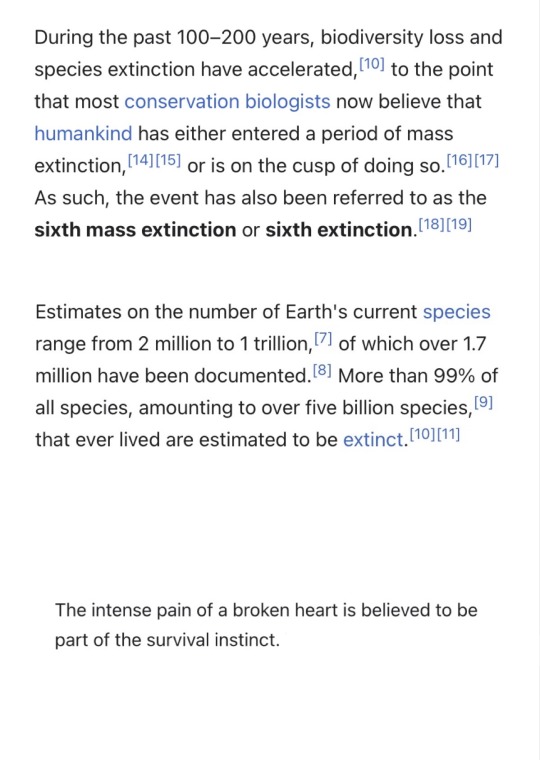
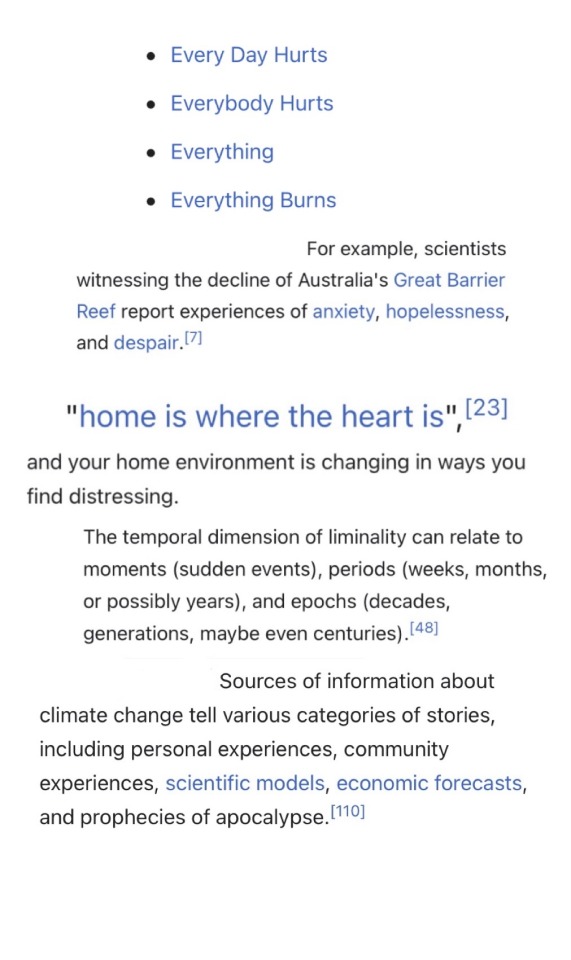

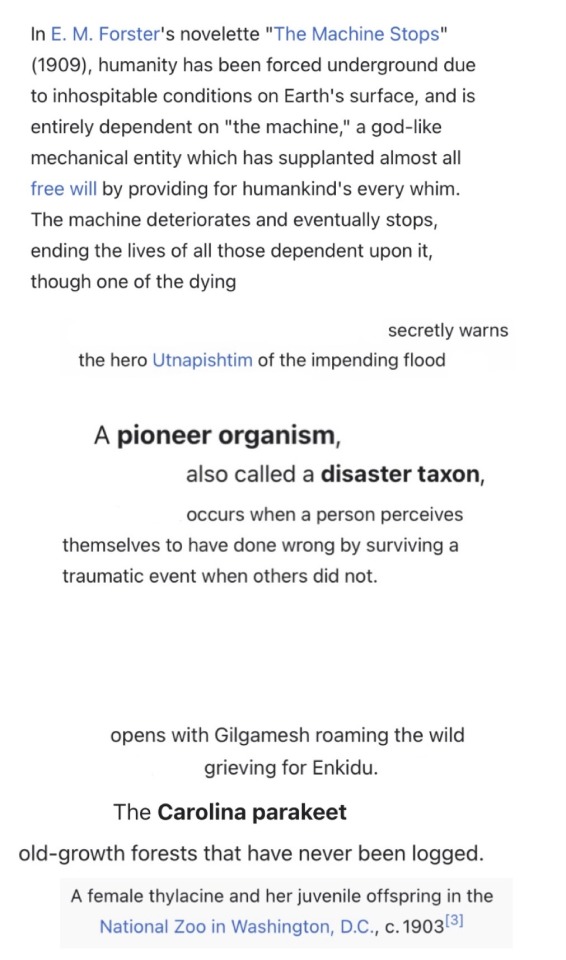


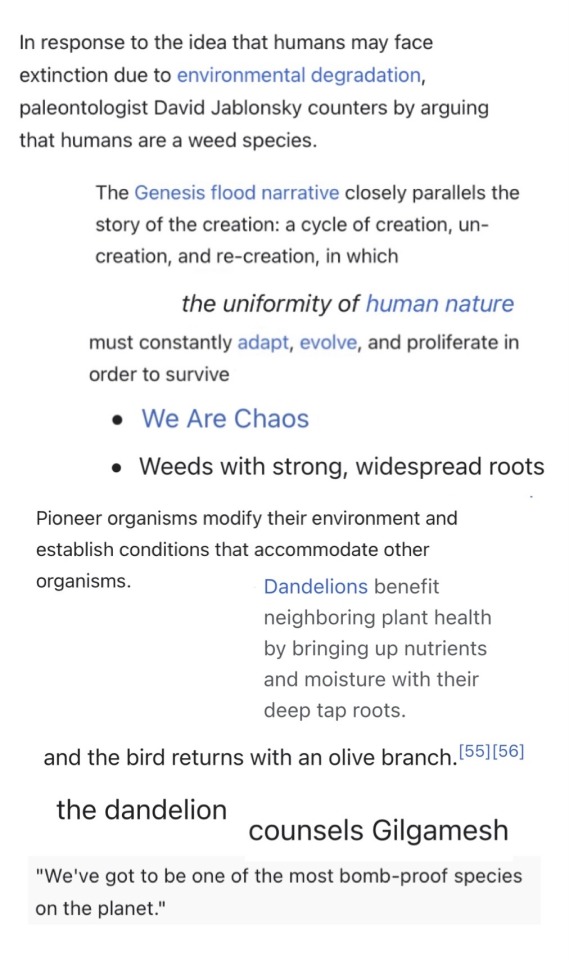
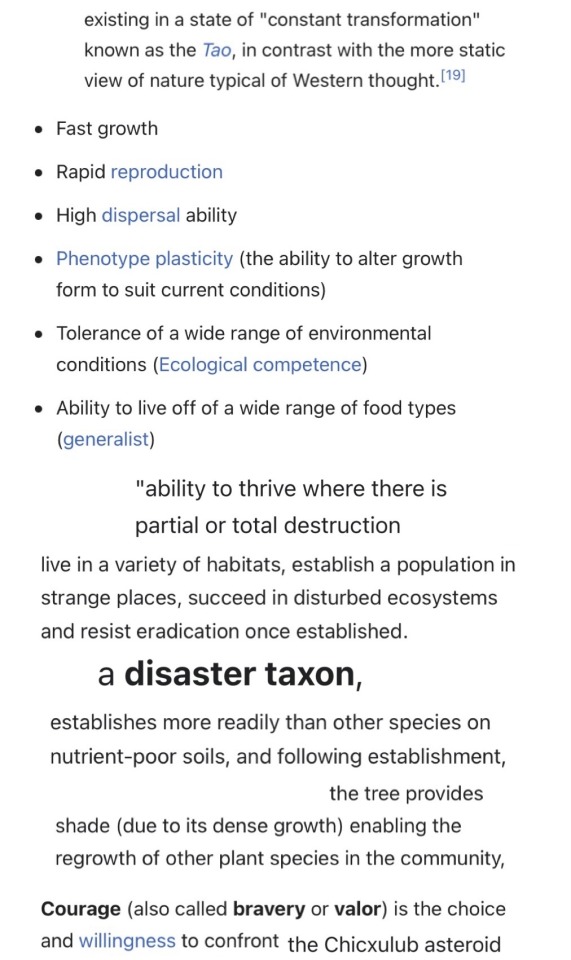

"Disaster Taxon," poem assembled using text from Wikipedia articles
#wikipedia poem#wikipedia poetry#climate grief#grief#environmental grief#resilience#climate change#gilgamesh#flood narrative#post apocalyptic#poetry#my writing#wikipedia poems#weeds#plantarchy#mass extinction#dandelion#utnapishtim
12K notes
·
View notes
Text
How Technology Access and Climate Gap Impact CO2 Removal?
TK Arun
The global cleavage on climate change is essentially between those that have grown rich enough to be climate-resilient and those that are not. The way to bridge this gap is not to set up any Loss and Damage Fund but to spend any money that the rich countries have to spare on sucking carbon dioxide (CO2) out of the atmosphere.
The World Economic Forum’s annual meet has ended at Davos…

View On WordPress
0 notes
Text

https://www.nytimes.com/2023/11/03/headway/hoboken-floods.html?unlocked_article_code=1.9kw.gbCb.cy56uUXSa4W2
"A study released by researchers for Rebuild by Design and Ramboll, an architectural engineering firm, suggests that every dollar invested in green infrastructure ultimately yields $2 in “avoided losses” (office closures, waterlogged inventories, flooded basements) and other benefits (improved home values and public health) [...] Just days before the September storm, New York’s mayor, Eric Adams, slashed $75 million that had been slated for the city’s Parks Department to deal with a budget crunch. Disinvestment in parks is going to cost the city in the long run because parks are a first line of defense against climate change."
418 notes
·
View notes
Text
Insurance companies are making climate risk worse
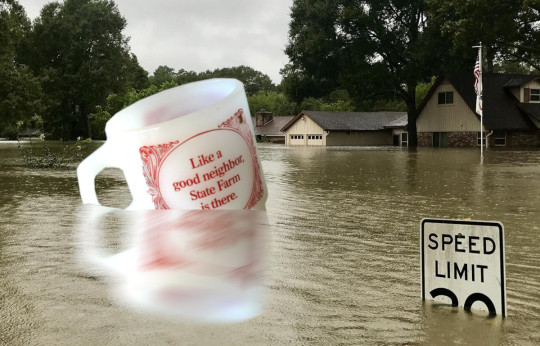
Tomorrow (November 29), I'm at NYC's Strand Books with my novel The Lost Cause, a solarpunk tale of hope and danger that Rebecca Solnit called "completely delightful."

Conservatives may deride the "reality-based community" as a drag on progress and commercial expansion, but even the most noxious pump-and-dump capitalism is supposed to remain tethered to reality by two unbreakable fetters: auditing and insurance:
https://en.wikipedia.org/wiki/Reality-based_community
No matter how much you value profit over ethics or human thriving, you still need honest books – even if you never show those books to the taxman or the marks. Even an outright scammer needs to know what's coming in and what's going out so they don't get caught in a liquidity trap (that is, "broke"), or overleveraged ("broke," again) exposed to market changes (you guessed it: "broke").
Unfortunately for capitalism, auditing is on its deathbed. The market is sewn up by the wildly corrupt and conflicted Big Four accounting firms that are the very definition of too big to fail/too big to jail. They keep cooking books on behalf of management to the detriment of investors. These double-entry fabrications conceal rot in giant, structurally important firms until they implode spectacularly and suddenly, leaving workers, suppliers, customers and investors in a state of utter higgeldy-piggeldy:
https://pluralistic.net/2022/11/29/great-andersens-ghost/#mene-mene-bezzle
In helping corporations defraud institutional investors, auditors are facilitating mass scale millionaire-on-billionaire violence, and while that may seem like the kind of fight where you're happy to see either party lose, there are inevitably a lot of noncombatants in the blast radius. Since the Enron collapse, the entire accounting sector has turned to quicksand, which is a big deal, given that it's what industrial capitalism's foundations are anchored to. There's a reason my last novel was a thriller about forensic accounting and Big Tech:
https://us.macmillan.com/books/9781250865847/red-team-blues
But accounting isn't the only bedrock that's been reduced to slurry here in capitalism's end-times. The insurance sector is meant to be an unshakably rational enterprise, imposing discipline on the rest of the economy. Sure, your company can do something stupid and reckless, but the insurance bill will be stonking, sufficient to consume the expected additional profits.
But the crash of 2008 made it clear that the largest insurance companies in the world were capable of the same wishful thinking, motivated reasoning, and short-termism that they were supposed to prevent in every other business. Without AIG – one of the largest insurers in the world – there would have been no Great Financial Crisis. The company knowingly underwrote hundreds of billions of dollars in junk bonds dressed up as AAA debt, and required a $180b bailout.
Still, many of us have nursed an ember of hope that the insurance sector would spur Big Finance and its pocket governments into taking the climate emergency seriously. When rising seas and wildfires and zoonotic plagues and famines and rolling refugee crises make cities, businesses, and homes uninsurable risks, then insurers will stop writing policies and the doom will become undeniable. Money talks, bullshit walks.
But while insurers have begun to withdraw from the most climate-endangered places (or crank up premiums), the net effect is to decrease climate resilience and increase risk, creating a "climate risk doom loop" that Advait Arun lays out brilliantly for Phenomenal World:
https://www.phenomenalworld.org/analysis/the-doom-loop/
Part of the problem is political: as people move into high-risk areas (flood-prone coastal cities, fire-threatened urban-wildlife interfaces), politicians are pulling out all the stops to keep insurers from disinvesting in these high-risk zones. They're loosening insurance regs, subsidizing policies, and imposing "disaster risk fees" on everyone in the region.
But the insurance companies themselves are simply not responding aggressively enough to the rising risk. Climate risk is correlated, after all: when everyone in a region is at flood risk, then everyone will be making a claim on the insurance company when the waters come. The insurance trick of spreading risk only works if the risks to everyone in that spread aren't correlated.
Perversely, insurance companies are heavily invested in fossil fuel companies, these being reliable money-spinners where an insurer can park and grow your premiums, on the assumption that most of the people in the risk pool won't file claims at the same time. But those same fossil-fuel assets produce the very correlated risk that could bring down the whole system.
The system is in trouble. US claims from "natural disasters" are topping $100b/year – up from $4.6b in 2000. Home insurance premiums are up (21%!), but it's not enough, especially in drowning Florida and Texas (which is also both roasting and freezing):
https://grist.org/economics/as-climate-risks-mount-the-insurance-safety-net-is-collapsing/
Insurers who put premiums up to cover this new risk run into a paradox: the higher premiums get, the more risk-tolerant customers get. When flood insurance is cheap, lots of homeowners will stump up for it and create a big, uncorrelated risk-pool. When premiums skyrocket, the only people who buy flood policies are homeowners who are dead certain their house is gonna get flooded out and soon. Now you have a risk pool consisting solely of highly correlated, high risk homes. The technical term for this in the insurance trade is: "bad."
But it gets worse: people who decide not to buy policies as prices go up may be doing their own "motivated reasoning" and "mispricing their risk." That is, they may decide, "If I can't afford to move, and I can't afford to sell my house because it's in a flood-zone, and I can't afford insurance, I guess that means I'm going to live here and be uninsured and hope for the best."
This is also bad. The amount of uninsured losses from US climate disaster "dwarfs" insured losses:
https://www.reuters.com/business/environment/hurricanes-floods-bring-120-billion-insurance-losses-2022-2023-01-09/
Here's the doom-loop in a nutshell:
As carbon emissions continue to accumulate, more people are put at risk of climate disaster, while the damages from those disasters intensifies. Vulnerability will drive disinvestment, which in turn exacerbates vulnerability.
Also: the browner and poorer you are, the worse you have it: you are impacted "first and worst":
https://www.climaterealityproject.org/frontline-fenceline-communities
As Arun writes, "Tinkering with insurance markets will not solve their real issues—we must patch the gaping holes in the financial system itself." We have to end the loop that sees the poorest places least insured, and the loss of insurance leading to abandonment by people with money and agency, which zeroes out the budget for climate remediation and resiliency where it is most needed.
The insurance sector is part of the finance industry, and it is disinvesting in climate-endagered places and instead doubling down on its bets on fossil fuels. We can't rely on the insurance sector to discipline other industries by generating "price signals" about the true underlying climate risk. And insurance doesn't just invest in fossil fuels – they're also a major buyer of municipal and state bonds, which means they're part of the "bond vigilante" investors whose decisions constrain the ability of cities to raise and spend money for climate remediation.
When American cities, territories and regions can't float bonds, they historically get taken over and handed to an unelected "control board" who represents distant creditors, not citizens. This is especially true when the people who live in those places are Black or brown – think Puerto Rico or Detroit or Flint. These control board administrators make creditors whole by tearing the people apart.
This is the real doom loop: insurers pull out of poor places threatened by climate disasters. They invest in the fossil fuels that worsen those disasters. They join with bond vigilantes to force disinvestment from infrastructure maintenance and resiliency in those places. Then, the next climate disaster creates more uninsured losses. Lather, rinse, repeat.
Finance and insurance are betting heavily on climate risk modeling – not to avert this crisis, but to ensure that their finances remain intact though it. What's more, it won't work. As climate effects get bigger, they get less predictable – and harder to avoid. The point of insurance is spreading risk, not reducing it. We shouldn't and can't rely on insurance creating price-signals to reduce our climate risk.
But the climate doom-loop can be put in reverse – not by market spending, but by public spending. As Arun writes, we need to create "a global investment architecture that is safe for spending":
https://tanjasail.wordpress.com/2023/10/06/a-world-safe-for-spending/
Public investment in emissions reduction and resiliency can offset climate risk, by reducing future global warming and by making places better prepared to endure the weather and other events that are locked in by past emissions. A just transition will "loosen liquidity constraints on investment in communities made vulnerable by the financial system."
Austerity is a bad investment strategy. Failure to maintain and improve infrastructure doesn't just shift costs into the future, it increases those costs far in excess of any rational discount based on the time value of money. Public institutions should discipline markets, not the other way around. Don't give Wall Street a veto over our climate spending. A National Investment Authority could subordinate markets to human thriving:
https://democracyjournal.org/arguments/industrial-policy-requires-public-not-just-private-equity/
Insurance need not be pitted against human survival. Saving the cities and regions whose bonds are held by insurance companies is good for those companies: "Breaking the climate risk doom loop is the best disaster insurance policy money can buy."
I found Arun's work to be especially bracing because of the book I'm touring now, The Lost Cause, a solarpunk novel set in a world in which vast public investment is being made to address the climate emergency that is everywhere and all at once:
https://us.macmillan.com/books/9781250865939/the-lost-cause
There is something profoundly hopeful about the belief that we can do something about these foreseeable disasters – rather than remaining frozen in place until the disaster is upon us and it's too late. As Rebecca Solnit says, inhabiting this place in your imagination is "Completely delightful. Neither utopian nor dystopian, it portrays life in SoCal in a future woven from our successes (Green New Deal!), failures (climate chaos anyway), and unresolved conflicts (old MAGA dudes). I loved it."

If you'd like an essay-formatted version of this post to read or share, here's a link to it on pluralistic.net, my surveillance-free, ad-free, tracker-free blog:
https://pluralistic.net/2023/11/28/re-re-reinsurance/#useless-price-signals
#pluralistic#doom loop#insurance#insuretech#climate#climate risk#climate emergency#the lost cause#market forces#risk management#price signals#control boards#decarbonization#bond vigilantes#climate resilience
262 notes
·
View notes
Link
The world’s salty, tidal marshes are hotspots of carbon storage and productivity, building up sediments and plant material so they can stay above sea level. Scientists wondering whether it’s possible for wetlands to keep up with rising sea levels have revealed research that shows how salt marshes along the U.S. coast have responded—by building up elevation more quickly over the last century.
From Good News Network
#habitat#habitat preservation#salt marsh#marsh conservation#wetland conservation#hope#good news#sea level rise#climate resiliency#climate change#global warming#climate anxiety#ecoanxiety#ecogrief#environment
590 notes
·
View notes
Text
semi-related, but - I would really like to see more (esp public-facing) urban disaster & evacuation planning that didn't begin with "step one: load all your essential supplies into the car that you definitely own"
#this is something I have pinned in the back of my mind for basing a project/paper/etc on at some point in school the next couple years#particularly with how it's relevant to climate resiliency on multiple fronts
203 notes
·
View notes
Text
In response to last year’s record-breaking heat due to El Niño and impacts from climate change, Indigenous Zenù farmers in Colombia are trying to revive the cultivation of traditional climate-resilient seeds and agroecology systems.
One traditional farming system combines farming with fishing: locals fish during the rainy season when water levels are high, and farm during the dry season on the fertile soils left by the receding water.
Locals and ecologists say conflicts over land with surrounding plantation owners, cattle ranchers and mines are also worsening the impacts of the climate crisis.
To protect their land, the Zenù reserve, which is today surrounded by monoculture plantations, was in 2005 declared the first Colombian territory free from GMOs.
#good news#science#environmentalism#indigenous people#indigenous agriculture#zenù#agroecology#nature#environment#farming#sustainable farming#climate resilience#climate change#columbia
55 notes
·
View notes
Photo

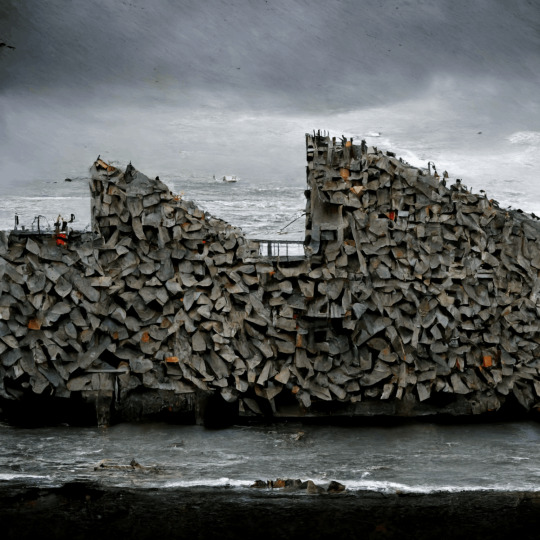


“Upcycled Collectives”
The project proposes an alternative architecture where construction debris up-cycling and mirco-climate systems work together to achieve architectural resilience in extreme weather conditions.
This approach argues for a "more is more" ethos; the accumulation of discrete leftover or refused material for its own sake. Reducing waste in landfills, local job sites and advocating for a radical change in our current waste and material supply chains while empowering local communities.
Erick Vernon-Galindo / Arch Hive
#art#design#Architecture#upcycle#concept#conceptual#sustainability#sustainable architecture#erick vernon-galindo#wood#debris#resilience#climate change#urbanism#arch hive
153 notes
·
View notes
Text

External activism is incredibly important but so is internal activism. How can we change the world around us if we can't treat ourselves with compassion? With the constant struggle of this work, there are part of you that deserve just as much attention and care.
-qbv
#queerbrownvegan#sustainability#climate change#environmentalism#social justice#environment#climate crisis#environmental justice#activism#intersectional environmentalism#wellbeing#resilience#mental health
91 notes
·
View notes
Note
hey, how do you cope with people saying we only have a small amount of time left to stop the worst effects of climate change? no matter how hopeful and ok i am, that always sends me back into a spiral :(
A few different ways
1. The biggest one is that I do math. Because renewable energy is growing exponentially
Up until basically 2021 to now, all of the climate change models were based on the idea that our ability to handle climate change will grow linearly. But that's wrong: it's growing exponentially, most of all in the green energy sector. And we're finally starting to see proof of this - and that it's going to keep going.
And many types of climate change mitigation serve as multipliers for other types. Like building a big combo in a video game.
Change has been rapidly accelerating and I genuinely believe that it's going to happen much faster than anyone is currently predicting
2. A lot of the most exciting and groundbreaking things happening around climate change are happening in developing nations, so they're not on most people's radars.
But they will expand, as developing nations are widely undergoing a massive boom in infrastructure, development, and quality of life - and as they collaborate and communicate with each other in doing so
3. Every country, state, city, province, town, nonprofit, community, and movement is basically its own test case
We're going to figure out the best ways to handle things in a remarkably quick amount of time, because everyone is trying out solutions at once. Instead of doing 100 different studies on solutions in order, we get try out 100 (more like 10,000) different versions of different solutions simultaneously, and then figure out which ones worked best and why. The spread of solutions becomes infinitely faster, especially as more and more of the world gets access to the internet and other key infrastructure
4. There's a very real chance that many of the impacts of climate change will be reversible
Yeah, you read that right.
Will it take a while? Yes. But we're mostly talking a few decades to a few centuries, which is NOTHING in geological history terms.
We have more proof than ever of just how resilient nature is. Major rivers are being restored from dried up or dead to thriving ecosystems in under a decade. Life bounces back so fast when we let it.
I know there's a lot of skepticism about carbon capture and carbon removal. That's reasonable, some of those projects are definitely bs (mostly the ones run by gas companies, involving carbon credits, and/or trying to pump CO2 thousands of feet underground)
But there's very real potential for carbon removal through restoring ecosystems and regenerative agriculture
The research into carbon removal has also just exploded in the past three years, so there are almost certainly more and better technologies to come
There's also some promising developments in industrial carbon removal, especially this process of harvesting atmospheric CO2 and other air pollution to make baking soda and other industrially useful chemicals
As we take carbon out of the air in larger amounts, less heat will be trapped in the atmosphere
If less heat is trapped in the atmosphere, then the planet will start to cool down
If the planet starts to cool down, a lot of things will stabilize again. And they'll probably start to stabilize pretty quickly
#Anonymous#ask#me#carbon removal#carbon sequestration#carbon emissions#air pollution#forests#afforestation#wetlands#regenerative farming#regenerative agriculture#agriculture#renewable energy#renewable electricity#solar power#wind power#climate change#climate anxiety#climate resilience#good news#hope#hope posting
5K notes
·
View notes
Text
Agmatix partners with NASA Harvest to support the uptake of sustainable agricultural practices
Agmatix, a start-up AgTech business specializing in turning agronomic big data into powerful models and insights, today announces a partnership with NASA Harvest – NASA’s global Food Security and Agriculture Consortium – to support crop production in a sustainable way at the field level and mitigate the impact of climate change.
A combination of ground sampling and remote sensing data will be…

View On WordPress
#Agricultural Innovation#Agricultural Tech - Farming Tech#Agriculture#AgriData - Use of Data in Food and Farming#AgTech#AgTech Startup#Artificial Intelligence in Agriculture#Business Partnerships in Food and Farming#Climate Resilient#Data Analytics#Data-Driven#Farm Management#Imagery#Satellite#Sustainable Agriculture
0 notes
Text
Hello, Tumblr!
Hiya Tumblr! This is the official Solarpunk Presents podcast account, which will be posting our podcasts (bimonthly... every two weeks ... however you like to say it), posts from our blog https://solarpunkpresents.com and reblogging / liking excellent solarpunk content.
We're just starting up our second season, so we don't have a ton of content right now, but watch this spot for podcast episodes that explore the people and projects working on bringing us a better world today. The podcast is cohosted by Christina De La Rocha and Ariel Kroon, who is the one writing this post and talking about herself in third person like a weirdo.
If you listen to our show and like what you hear, leave us a nice review on your podcatcher platform? We'd super appreciate it. If you have some money to spare and would like to support solarpunk content, we also have a Patreon, where Patrons get early access to our episodes + bonus content sometimes, when we get a minute.
Stay solarpunk!
-Ariel
#solarpunk#podcast#solarpunkpodcast#utopia#utopian futurism#positive futurism#activism#climate justice#gardening#plants#resilience#adaptation#community#worlding#Patreon
109 notes
·
View notes
Text
(11.28.23)
Living in a dying body,
Stranded on a dying world,
What shall the dying do?
Grind our bleach-white coral bones,
Drown in rising water, our limbs too weak to tread?
How about this instead?
On New Year's Eve, my father, a doctor of the weather said:
"I believe in the resilience of our atmosphere."
And thus began my year,
With a body set for ambush storms, and unprepared to take my cover,
Hopeful, kicking at the knees that wouldn't last the summer.
But if Dad can see the damning data and give us yet our chance,
Then I will face the fates that are written in my scans,
Feed the sturgeon lunch at the museum,
Bend slowly to the waterline and whisper this to them:
"I believe in our resilience, too."
#whether it's conservation or medicine I am interested primarily in resilience#prevention is great. love to prevent things.#but we are living on a world that already has a lot of scars. a lot of us are living in bodies that already have injuries and diseases#there are some disasters that are out of anyone's control right now (like the onset of autoimmune disorders)#and there are some disasters that are out of the hands of most people who care about preventing them (like climate change)#and so what i really need to know is:#what can we do when our bodies are already hurting? what can we do for environments that have already experienced destruction?#I don't know but all I know is that we can't do nothing#and I hope that I won't be the only one trying#i hope i live to see old age. i hope i live to see the cure for arthritis. i hope i live to see the coral reefs restored.#i can't do it all myself. but i have to do something.#my writing#my poetry
17 notes
·
View notes
Link
“Many young farmers share Kent’s commitment to sustainability, according to a new report from the National Young Farmers Coalition (NYFC). In a survey of over 10,000 farmers across the country, 86% of respondents under 40 said they used regenerative farming practices, which the survey defined as “an approach to farming and ranching that builds healthy soils and ecosystems, supports climate-resilient farms and communities, and addresses inequity in agriculture.”
Of course, as the survey notes, regenerative farming practices aren’t new. Indigenous communities — many of whom were pushed off the land they stewarded for millennia — innovated and practiced these farming techniques for generations.
‘Young farmers today find motivation to farm in environmental conservation, anti-racism, and creating healthy, food secure, and climate-resilient communities,’ says Vanessa Garcia Polanco, NYFC’s policy campaign director.
Overhauling the United States’ agriculture system will be crucial to meeting its climate goals. Farms cover about 40% of all U.S. land, according to the most recent census, and agriculture accounts for about 11% of the country’s greenhouse gas emissions.”
#agriculture#farming#sustainability#regenerative agriculture#climate resilience#environmenta#conservation#anti-racism#food security#climate
148 notes
·
View notes